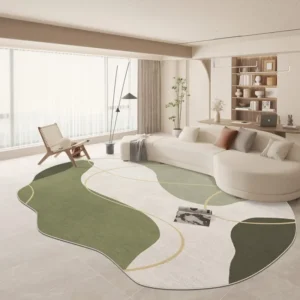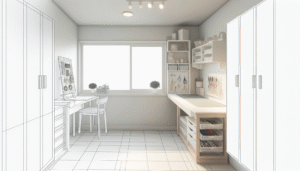
Ever feel overwhelmed by clutter? Drowning in a sea of packaging, forgotten items, and inefficient spaces? You’re not alone. In today’s fast-paced world, the challenge of managing our belongings and the waste they generate is more pressing than ever. This isn’t just about tidiness; it’s about impact – on our wallets, our productivity, and the planet. That’s where **waste minimizing storage solutions** come into play. They’re not just a neat trick; they’re a fundamental shift in how we approach organization, consumption, and sustainability.
Imagine a living space where every item has a purpose and a place, reducing the likelihood of impulse buys or forgotten perishables. Picture a business operation where inventory is optimized, packaging waste is slashed, and efficiency soars. This isn’t a utopian dream; it’s a tangible outcome when you strategically implement **waste minimizing storage solutions**. This comprehensive guide will equip you with the knowledge, tools, and inspiration to transform your spaces, reduce your ecological footprint, and reclaim control. We’ll dive deep into practical strategies, explore innovative products, and reveal how integrating these solutions can lead to profound, positive changes in both personal and professional environments.
By the end of this article, you’ll understand not just *what* these solutions are, but *how* to implement them effectively, turning your aspirations for a more organized, sustainable life into a vibrant reality. Get ready to discover the power of thoughtful storage!
The Hidden Cost of Clutter and Waste: Why Proactive Storage Matters
Before we explore solutions, let’s confront the problem. Clutter isn’t just aesthetically displeasing; it carries significant tangible and intangible costs. Understanding these costs is the first step towards embracing **waste minimizing storage solutions** as a necessity, not a luxury.
The Environmental Burden: More Than Just Landfills
- Excessive Consumption: Disorganized spaces often lead to buying duplicates of items we already own but can’t find. This cycle fuels overconsumption, contributing to resource depletion.
- Packaging Proliferation: From product packaging to shipping materials, our purchases often come with a mountain of waste. Inefficient storage exacerbates this, as we might hold onto unnecessary packaging “just in case” or end up throwing out items due to lack of proper storage. The EPA estimates that packaging accounts for a significant portion of municipal solid waste, reaching over 82 million tons in 2018.
- Product Obsolescence & Spoilage: If items aren’t stored correctly – whether food, electronics, or clothing – they degrade faster, become unusable, or spoil, leading directly to waste. Food waste alone contributes significantly to greenhouse gas emissions globally.
Economic Drain: Every Inch, Every Item Has a Price Tag
- Lost Productivity: A cluttered workspace or home means time wasted searching for items. For businesses, this translates directly to reduced operational efficiency and lost revenue. Studies by the National Association of Professional Organizers suggest people spend up to an hour a day looking for things.
- Financial Outlay on Duplicates: As mentioned, buying replacements for lost or forgotten items is a direct financial hit. This “clutter tax” adds up over time.
- Increased Storage Costs: When spaces become too full, individuals and businesses often resort to renting external storage units, incurring additional monthly expenses that could be avoided with better internal systems.
- Depreciation and Damage: Poor storage can lead to items being damaged, stained, or broken, necessitating costly repairs or replacements sooner than expected.
Mental & Emotional Toll: Beyond the Tangible
- Stress and Anxiety: A disorganized environment can contribute to feelings of overwhelm, stress, and anxiety. The constant visual stimulation of clutter can be mentally draining.
- Reduced Focus: Our brains are wired to notice novelty. Clutter creates a cacophony of visual stimuli, making it harder to focus on tasks at hand.
- Impact on Well-being: Living or working in a chaotic environment can affect mood, sleep, and overall sense of well-being. A sense of control over our environment translates to a sense of control over our lives.
Recognizing these multifaceted costs underscores the urgency and value of embracing thoughtful **waste minimizing storage solutions**. It’s not just about neat shelves; it’s about a more sustainable, efficient, and peaceful existence.
The Core Principles of Waste Minimizing Storage Solutions
Effective waste reduction through storage isn’t accidental; it’s built upon a foundation of key principles. These principles guide our choices, from initial decluttering to long-term maintenance, ensuring that our solutions are truly sustainable and impactful.
1. Reduce First: The Golden Rule of Minimalism
Before organizing, before storing, there must be reduction. This principle challenges us to critically evaluate what we truly need versus what we simply possess. By minimizing the sheer volume of items, we automatically reduce the need for extensive storage and the potential for future waste.
- Declutter Ruthlessly: Adopt methodologies like Marie Kondo’s “KonMari” method or the “four-box method” (keep, donate, trash, relocate). Be honest about an item’s utility and sentimental value.
- One In, One Out: For every new item brought into the home or business, an old, similar item must leave. This prevents accumulation and forces intentional purchasing.
- Digitalize Documents: Reduce paper waste and physical storage needs by scanning and storing documents digitally.
2. Repurpose & Reuse: Creative Solutions for Circularity
This principle focuses on extending the life cycle of items, turning potential waste into valuable storage assets. It’s about seeing potential where others see trash.
- Upcycled Containers: Glass jars from food, sturdy cardboard boxes, or old luggage can be transformed into stylish and functional storage. Think beyond their original purpose.
- Multi-functional Furniture: Invest in pieces that serve dual purposes, such as an ottoman with storage, a bed with built-in drawers, or benches that double as chests.
- Closed-Loop Systems for Packaging: For businesses, this means exploring reusable packing materials for internal logistics or partnering with suppliers who offer returnable packaging options.
3. Optimize Space: Smart Design for Maximized Capacity
Once you’ve reduced and repurposed, the next step is to maximize the utility of your existing space. This often involves thinking vertically and utilizing clever design.
- Vertical Storage: Shelves, wall-mounted organizers, and stackable bins exploit vertical space often overlooked. This is particularly crucial for small apartments or compact business warehouses.
- Modular Systems: Storage units that can be configured and reconfigured allow for adaptability as needs change, maximizing flexibility and minimizing redundant pieces.
- Categorization and Labeling: A well-categorized and clearly labeled system ensures that items are easy to find and return, reducing time wasted and preventing items from getting lost or expiring.
4. Maintain & Iterate: Keeping Systems Alive
A storage solution isn’t a one-time fix; it’s an ongoing process. Regular review and adaptation are crucial for its long-term success and continued waste minimization.
- Regular Audits: Schedule periodic reviews of your storage areas to declutter again, re-evaluate needs, and adjust systems.
- Feedback Loops (Business): For commercial settings, gather feedback from staff on storage challenges and efficiency bottlenecks. Use this to refine processes and physical setups.
- Embrace Digital Inventory: Especially for businesses, a robust digital inventory management system can track stock levels, expiry dates, and usage patterns, significantly reducing waste from overstocking or spoilage.
By internalizing these core principles, you’ll build robust and sustainable **waste minimizing storage solutions** that stand the test of time, evolving with your needs rather than becoming another source of clutter themselves.
Practical Waste Minimizing Storage Solutions for the Home
Our homes are often the biggest culprits of hidden waste. From overflowing pantries to forgotten craft supplies, inefficient storage directly contributes to both clutter and financial drain. Let’s explore specific **waste minimizing storage solutions** designed for various areas of your dwelling.
The Kitchen: Battling Food Waste & Packaging
The kitchen is ground zero for food waste. Smart storage here is paramount for extending shelf life and reducing packaging.
- Airtight Containers for Bulk Goods:
 Invest in high-quality, reusable glass or BPA-free plastic containers. Buy staples like pasta, rice, flour, and grains in bulk to reduce packaging waste and save money. Label clearly with contents and purchase dates.
Invest in high-quality, reusable glass or BPA-free plastic containers. Buy staples like pasta, rice, flour, and grains in bulk to reduce packaging waste and save money. Label clearly with contents and purchase dates. - “First In, First Out” (FIFO) Pantry System: Organize your pantry so older items are at the front and new items are placed behind them. This simple rule dramatically reduces food spoilage and minimizes waste.
- Vertical Pantry Organizers: Utilize tiered shelves, stackable bins, and door-mounted spice racks. Maximizing vertical space helps visibility, ensuring items aren’t forgotten in the back.
- Refrigerator & Freezer Organization: Use clear bins to group similar items. Store produce in designated drawers, and freeze leftovers in portioned, reusable containers to extend their life. A clear fridge means less forgotten food.
- Reusable Produce Bags & Wraps: Store fresh produce in breathable mesh bags or use beeswax wraps instead of single-use plastic. This keeps produce fresher longer and reduces plastic waste.
- Compost Bins: While not strictly “storage,” a dedicated countertop compost bin for food scraps is a crucial part of a waste-minimizing kitchen. It keeps organic waste out of landfills.
The Closet & Laundry Room: Extending Clothing Life, Reducing Material Waste
Fast fashion generates immense waste. Smart storage helps us care for what we own, reducing the need for constant replacements.
- Capsule Wardrobe Concept: Curate a smaller collection of versatile, high-quality garments. Less clothing means less storage needed and less decision fatigue.
- Proper Hangers & Storage Systems: Use appropriate hangers (e.g., velvet for slippery fabrics, padded for delicate items) to maintain garment shape. Fold sweaters to prevent stretching. Drawer dividers keep smaller items organized.
- Seasonal Storage: For off-season clothing, use breathable garment bags or vacuum-seal bags to protect items from dust, pests, and moisture, extending their lifespan. Store them in under-bed containers or high-up shelves.
- Mending & Repair Station: Designate a small area or box for sewing kits, fabric glue, and other repair tools. Easy access encourages mending rather than discarding.
The Bathroom: Minimizing Packaging & Chemical Waste
Personal care products often come with excessive packaging. Thoughtful storage encourages refillable options.
- Refillable Dispensers: Purchase soaps, shampoos, and lotions in bulk from refill stores and transfer them to aesthetic, reusable dispensers. Store bulk containers neatly under the sink.
- Vertical Shower Caddies: Maximizes space in the shower, keeping products organized and improving air circulation around items like bar soap, making them last longer.
- Drawer Dividers: Keep small items like makeup, dental floss, and cotton swabs separated and visible, preventing duplicates and ensuring older items are used first.
- Herb and Spice Drying Racks (A tangent with value): If you grow herbs, a small drying rack or hanging dehydrator can turn excess harvest into long-lasting provisions, preventing spoilage and reducing reliance on packaged seasonings.
General Home Organization: Beyond Specific Rooms
- Entryway Organizer with Recycling Bins: A compact unit near the door with spaces for mail, keys, and integrated bins for paper, plastic, and glass encourages immediate sorting of incoming waste.
- Modular Shelf Systems: Adaptable shelving that can be reconfigured is perfect for garages, utility rooms, or living areas, accommodating changing storage needs without buying new units.
- Command Center for Paperwork: A designated spot with a filing system (digital preference, physical backup) for bills, important documents, and school notices prevents paper clutter from accumulating and getting lost.
- Under-Bed Bins: Utilize this often-forgotten space for linens, off-season clothes, or sentimental items in dust-proof containers.
Implementing these **waste minimizing storage solutions** at home transforms not just your physical space but also cultivates a mindset of intentionality and sustainability. It’s about living smarter, not just tidier.
Strategic Waste Minimizing Storage Solutions for Businesses
For businesses, waste isn’t just an environmental concern; it’s a direct hit to the bottom line. Inefficient storage leads to financial losses from damaged goods, expired inventory, missed opportunities, and increased operational costs. Adopting robust **waste minimizing storage solutions** is critical for operational efficiency, cost reduction, client satisfaction, and corporate social responsibility.
Warehouse & Inventory Management: The Heartbeat of Efficiency
Effective warehouse storage can dramatically reduce waste in manufacturing, retail, and logistics sectors.
- Advanced Inventory Management Systems (IMS):
- Digital Tracking: Implement software that tracks every item from receipt to dispatch. This provides real-time data on stock levels, locations, and movement.
- Demand Forecasting: Utilize IMS data to predict demand more accurately, preventing overstocking (which leads to spoilage, obsolescence, or excess returns) and understocking (which can lead to rushed, wasteful emergency orders).
- Expiry Date Management (Batch Tracking): Particularly crucial for perishable goods (food, pharmaceuticals), IMS with batch tracking ensures a strict FIFO system, alerting staff to items nearing expiry and prioritizing their dispatch. NetSuite offers excellent insights into batch tracking for inventory optimization.
- Vertical Storage Systems:
- Pallet Racking: Maximize vertical space with multi-level pallet racking for bulk storage.
- Automated Storage and Retrieval Systems (AS/RS): For high-volume warehouses, AS/RS can optimize space significantly, reduce human error, and retrieve items precisely, minimizing damage.
- Mezzanine Floors: Add an intermediate floor within a high-ceiling warehouse to double usable space without expanding the building footprint.
- Optimized Aisle Layouts & Slotting: Strategically arrange aisles and product placement based on popularity, size, and pick frequency. ABC analysis (A=fast-moving, B=medium, C=slow) helps slotting to minimize travel time and reduce handling damage.
- Cross-Docking Strategies: For certain goods, bypass storage altogether. Products are unloaded from an incoming truck and directly loaded onto an outbound truck, minimizing handling, storage time, and the potential for damage/obsolescence.
Office & Administrative Storage: Paperless & Purposeful
Even in the digital age, offices can accumulate mountains of paper and defunct equipment. Thoughtful solutions reduce both visible and hidden waste.
- Digital Document Management Systems (DDMS):
- Cloud-Based Archiving: Store documents securely in the cloud, eliminating the need for physical filing cabinets.
- E-Signatures & Paperless Workflows: Implement systems that allow for digital approval and signing, drastically cutting down on printing.
- Centralized Knowledge Bases: Consolidate company information in an accessible digital format, reducing the need for printed manuals or redundant copies.
- Shared Resource Hubs: Instead of individual printers or supply stashes, create centralized, well-organized hubs for shared office supplies, reducing bulk purchases and tracking usage.
- Ergonomic & Modular Furniture: Invest in furniture that can be reconfigured or adapted to various needs, extending its lifespan and reducing the need for new purchases as office layouts change.
- Secure IT Asset Disposal (ITAD) Partnerships: Electronics are a major waste stream. Partner with certified ITAD vendors who ensure data destruction and proper recycling or refurbishment of old equipment.
Retail & Merchandising Storage: Visual Appeal & Inventory Control
Retail environments demand storage that is both functional for operations and aesthetically pleasing for customers.
- Flexible Display Systems: Modular shelving, slat walls, and gondolas allow for easy reconfiguration of displays, adapting to changing inventory without investing in new fixtures. This reduces waste from discarded, unfit fixtures.
- Backroom Optimization: Implement compact shelving, clear labeling, and dedicated zones (e.g., “new arrivals,” “restock,” “returns”) to ensure efficient flow, prevent damage, and speed up replenishment.
- “Zero Waste” Display Concepts: Use natural materials, reusable props, and minimal, recyclable signage. Consider digital signage to reduce print waste.
- Point-of-Sale (POS) & ERP Integration: Ensure your POS system integrates seamlessly with your Enterprise Resource Planning (ERP) to provide accurate, real-time sales data, allowing for precise inventory replenishment and minimizing overstock.
For any business, the journey to implement truly effective **waste minimizing storage solutions** is ongoing. It requires a commitment to continuous improvement, technological adoption, and a culture that values efficiency and sustainability at every level. The payoff, however, is substantial: reduced costs, enhanced reputation, and a measurable positive environmental impact. Think of it as investing in your future.
Innovative Products & Technologies for Waste Minimizing Storage
The market is brimming with ingenious products and advanced technologies designed to supercharge your waste reduction efforts through smart storage. From eco-friendly materials to smart sensors, these innovations empower individuals and businesses alike to optimize their spaces and minimize their footprint. Integrating these tools can significantly enhance your **waste minimizing storage solutions** strategy.
Smart Home & Office Solutions
- Smart Pantries & Fridges: Some advanced refrigerators can take internal photos and provide inventory lists, reminding you of what you have and what’s expiring soon. Paired with apps, they can even suggest recipes based on available ingredients, drastically cutting down on food waste.
- IoT-Enabled Bins and Compactors: For businesses generating significant refuse, smart bins can alert facility managers when they’re full, optimizing collection routes and reducing unnecessary trips. Smart compactors can efficiently crush waste, reducing volume and thus collection frequency.
- Digital Asset Management (DAM) Systems: Beyond documents, DAMs help businesses organize and track digital images, videos, audio, and other creative assets, reducing the need for physical samples or redundant design efforts.
Eco-Friendly & Sustainable Storage Materials
The materials your storage solutions are made from can significantly impact their environmental footprint. Choose wisely!
- Bamboo & Recycled Wood Storage: These materials are renewable, durable, and offer a natural aesthetic. Bamboo grows rapidly, making it a highly sustainable choice for shelves, boxes, and drawer organizers.
- Recycled Plastic Bins (rPET, HDPE): Opt for storage containers made from post-consumer recycled plastics. This diverts waste from landfills and reduces the demand for virgin plastic production. Look for certifications.
- Organic Cotton & Jute Bins: For soft storage like laundry hampers or toy bins, natural fibers are breathable, biodegradable, and often produced with lower environmental impact than synthetic alternatives.
- Bioplastic & Compostable Packaging (B2B): For internal business storage or specific product lines, consider solutions made from PLA (polylactic acid) or other compostable bioplastics where appropriate composting infrastructure exists.
Modular & Adaptable Furniture/Fixtures
The ability to reconfigure and repurpose storage components ensures longevity and reduces future waste.
- Pegboard Systems: Highly versatile for garages, craft rooms, or even retail displays. Pegboards and a variety of hooks, shelves, and baskets can be endlessly rearranged as needs change, maximizing wall space.
- Interlocking Bins & Drawers: Systems designed to snap together allow for customized configurations, perfect for small parts in workshops or office supplies. These are easy to expand or re-tool.
- Tension Rod Organizers: Simple, inexpensive, and incredibly versatile for creating instant shelves or dividers in cabinets, closets, or under sinks without permanent installation.
Specialized Waste Reduction Tools
- Vacuum Sealers (Food & Textiles):
 For food, vacuum sealing extends shelf life by weeks or months, significantly reducing waste. For textiles, it compresses bulky items, saving space and protecting them from pests.
For food, vacuum sealing extends shelf life by weeks or months, significantly reducing waste. For textiles, it compresses bulky items, saving space and protecting them from pests. - Food Huggers & Silicone Lids: Reusable silicone covers for cut fruits, vegetables, or open cans replace single-use plastic wrap and foil, maintaining freshness and minimizing waste.
- Compost Starter Bins (Indoor/Outdoor): Modern compost bins are aesthetically pleasing and efficient, making organic waste diversion simple for any home or business with green space.
When selecting **waste minimizing storage solutions** or products, always consider material sourcing, durability, and the end-of-life options. Prioritize products that are built to last, made from recycled or renewable resources, and are themselves recyclable or compostable.
Implementing Your Waste Minimizing Storage Plan: A Step-by-Step Guide
Knowledge without action is merely observation. To truly benefit from **waste minimizing storage solutions**, you need a clear, actionable plan. Whether you’re tackling your home pantry or an entire commercial warehouse, these steps provide a robust framework.
Step 1: Assess & Audit Your Current Situation
You can’t fix what you don’t understand. Start by thoroughly evaluating your existing storage landscape.
- Identify Problem Areas: Where does clutter accumulate most? What items frequently go missing or expire? Where do you notice the most packaging waste?
- Inventory Everything: For a home, this might mean opening every cabinet and drawer. For a business, this is a full inventory count. Document quantities, conditions, and expiry dates (if applicable).
- Analyze Usage Patterns: Which items are frequently accessed? Which are seasonal or rarely used? This helps determine optimal placement and storage density.
Step 2: Declutter & Categorize Ruthlessly
This is the crucial “reduce first” stage. Be honest and intentional.
- The “Keep, Donate, Recycle, Dispose” Method: Go item by item.
- Keep: Items that are currently used, truly needed, or hold significant sentimental value.
- Donate: Items in good condition that you no longer need.
- Recycle: Items that can be processed at your local facility.
- Dispose: Items that are truly trash and cannot be recycled or repurposed.
- Group Like Items: Once you’ve decided what to keep, group similar items together (e.g., all cleaning supplies, all tools, all office stationery). This forms the basis of your new organizational scheme.
- Address Waste Streams: Identify recurring waste items (e.g., plastic bags, broken electronics, specific packaging). Plan how to reduce their influx or responsibly manage their disposal.
Step 3: Design Your Optimal Storage System
Based on your reduced inventory and usage patterns, it’s time to plan your new setup. This is where **waste minimizing storage solutions** truly take shape.
- Map Out Your Space: Sketch out your available storage areas. Consider vertical space, hard-to-reach corners, and under-furniture opportunities.
- Choose the Right Tools: Select storage containers, shelves, dividers, and fixtures that align with your needs and the principles of waste minimization (e.g., durable, modular, made from sustainable materials).
- Example for Kitchen: Glass jars for bulk, clear airtight containers for leftovers, vertical shelf inserts.
- Example for Warehouse: Pallet racking for bulk, smaller bins for fast-moving items, space for returnable packaging.
- Prioritize Accessibility: Store frequently used items at eye level and within easy reach. Less frequent items can go higher or lower.
- Plan for Growth/Adaptability: Design systems that can flex as your inventory or needs change. Modular systems are key here.
Step 4: Implement & Label
Bring your plan to life! Don’t skip the labeling.
- Place Each Item Strategically: Put everything in its designated spot according to your plan.
- Label Clearly and Consistently: Labels are non-negotiable for long-term success. Use consistent naming conventions. Include expiry dates for food items or batch numbers for business inventory. This makes items easy to find and return, and prevents waste.
- Consider Digital Inventory: For businesses, this is the stage to integrate items into your IMS. For home, a simple spreadsheet or even a photo-based app can help prevent duplicates.
Step 5: Maintain & Refine
Storage is not a “set it and forget it” task. Continuous effort ensures long-term success.
- Schedule Regular Check-ins: Weekly tidies, monthly deep cleans, or quarterly business inventory audits. Make it a routine.
- Adhere to “One In, One Out”: Reinforce this habit to prevent re-accumulation.
- Gather Feedback: In a business setting, solicit input from employees on what’s working and what isn’t. Be open to refining systems.
- Embrace “Good Enough”: Perfection is often the enemy of progress. Your system will evolve. The goal is continuous improvement, not flawlessness.
By following these systematic steps, you’ll not only implement effective **waste minimizing storage solutions** but also cultivate a more mindful and sustainable approach to consumption and organization in your life or business.
The Long-Term Dividends of Waste Minimizing Storage
Implementing effective **waste minimizing storage solutions** is more than just a fleeting trend; it’s an investment that yields substantial and sustained benefits. These dividends extend far beyond a tidy space, impacting your finances, well-being, and environmental footprint for years to come.
Economic Advantages: More Than Just Savings
- Reduced Expenditure: No more buying duplicates, less food spoilage, and decreased need for external storage facilities translate into significant financial savings for individuals and businesses alike. One study highlighted that the average American household wastes about $1,500 annually on food that goes uneaten.
- Increased Productivity & Efficiency: For businesses, time saved searching for items or managing chaotic inventory directly translates to higher output and optimized labor costs. For individuals, less time spent organizing means more time for productive or enjoyable activities.
- Lower Operational Costs (Business): Optimized warehouse design can reduce energy consumption (heating/cooling smaller areas), cut down on material handling costs, and even lower insurance premiums through better safety.
- Enhanced Asset Longevity: Proper storage protects items from damage, dust, and decay, extending their lifespan and delaying replacement costs. This applies to everything from consumer electronics to industrial machinery.
Environmental Impact: Building a Greener Future
- Decreased Landfill Waste: By reducing consumption, reusing items, and preventing obsolescence, you directly contribute to diverting waste from landfills.
- Reduced Carbon Footprint: Less waste means less energy expended in manufacturing, transporting, and disposing of goods. Businesses using efficient storage for optimized logistics also reduce fuel consumption.
- Conservation of Resources: Less demand for new products means less extraction of raw materials, protecting natural ecosystems.
- Promoting Circular Economy: Effective waste minimizing storage is a cornerstone of the circular economy, where resources are kept in use for as long as possible, extracting maximum value from them, then recovering and regenerating products and materials at the end of each service life.
Improved Well-being & Reputation: The Intangible Gains
- Reduced Stress & Mental Clarity: A decluttered, organized environment fosters a sense of calm and control, reducing anxiety and improving mental focus.
- Enhanced Decision-Making: Both individuals and business leaders can make clearer decisions when not overwhelmed by physical or digital clutter, leading to better strategic outcomes.
- Positive Brand Image (Business): Companies known for their sustainable practices, including efficient waste management and storage, often enjoy enhanced brand loyalty, attract top talent, and appeal to environmentally conscious consumers.
- Inspiring Others: Your commitment to waste minimization and smart storage can inspire family members, employees, and even competitors to adopt similar practices, creating a ripple effect of positive change.
The journey to master **waste minimizing storage solutions** is a continuous one, but the rewards are profound. It’s about moving from a reactive approach to waste to a proactive, integrated strategy that benefits every facet of your life or business. Embrace the challenge, and watch the dividends accrue.
Common Misconceptions About Waste Minimizing Storage
As with many beneficial practices, there are often misunderstandings that deter people from fully embracing waste minimizing storage solutions. Let’s debunk some common myths and clarify what truly makes these strategies effective.
Myth 1: It Requires Expensive, Specialty Storage Products
Reality: While there are many innovative products on the market, effective waste minimizing storage often starts with repurposing items you already own or making smart, budget-friendly choices. Glass jars, sturdy cardboard boxes, or pre-existing shelves can be incredibly effective. The emphasis is on *strategy* and *system*, not solely on brand-new containers. In fact, buying more “stuff” to organize your “stuff” often exacerbates the problem if not done intentionally.
Myth 2: It’s Only for Minimalists or “Extreme” Environmentalists
Reality: Waste minimization through smart storage is a practical approach for anyone seeking more efficiency, less stress, and financial savings. You don’t have to live with only 100 items to benefit. Even small changes, like organizing your pantry to reduce food waste or digitizing a few paper files, yield tangible benefits for everyday people and mainstream businesses. It’s about conscious choices, not necessarily austere living.
Myth 3: Once Set Up, It’s Done Forever
Reality: This is perhaps the biggest misconception. Life evolves, needs change, and new items inevitably enter your space. Effective **waste minimizing storage solutions** are dynamic systems that require ongoing maintenance, periodic review, and a willingness to adapt. Without regular decluttering and refinement, even the best system will eventually succumb to entropy.
Myth 4: It Means Getting Rid of Everything You Love
Reality: Not at all. The goal is to keep what you *value* and *use*, while smartly organizing it to prevent waste and clutter. It’s about being intentional with your possessions, not depriving yourself. Sentimental items absolutely have a place, as long as they are stored thoughtfully and don’t overwhelm your space or functional needs.
Myth 5: It’s Too Time-Consuming to Implement
Reality: The initial setup can require an investment of time, no doubt. However, consider it an investment that pays significant dividends. The time spent upfront designing and implementing efficient **waste minimizing storage solutions** is quickly recuperated through time saved searching, managing waste, and replacing lost or expired items. It’s a classic “spend a little to save a lot” scenario.
By understanding these realities, you can approach waste minimizing storage with a clearer perspective, ready to integrate these powerful strategies without being hindered by misplaced expectations.
FAQ: Your Questions About Waste Minimizing Storage Solutions Answered
What are the primary benefits of waste minimizing storage solutions?
The primary benefits are multifaceted. You’ll experience significant cost savings by reducing wasted food, avoiding duplicate purchases, and optimizing space. Environmentally, you’ll reduce landfill contributions and your carbon footprint. Personally, it leads to a less stressful, more efficient, and aesthetically pleasing environment. For businesses, expect increased productivity, reduced operational overhead, and an enhanced brand reputation.
How can I start implementing waste minimizing storage solutions in my home today?
Begin by choosing one small area, like a pantry drawer or a single cabinet. Remove everything, sort items into “keep, donate, recycle, dispose,” and then neatly put back only what you truly need and use. Focus on vertical space and clear labeling. This small win builds momentum for larger projects. Gradually expand this process to other areas of your home, focusing on one space at a time.
What kind of storage products are best for minimizing waste?
Look for durable, reusable, and multi-functional products. Glass or BPA-free plastic airtight containers for food, modular shelving made from sustainable materials like bamboo or recycled wood, fabric bins made from organic cotton or jute, and anything that helps you utilize vertical space. Prioritize quality over quantity, and consider repurposing items you already own before buying new.
Is waste minimizing storage effective for businesses of all sizes?
Absolutely. While the scale differs, the principles remain the same. Small businesses can implement digital document management and efficient backroom organization, while large enterprises can leverage advanced IMS, AS/RS, and circular packaging initiatives. The core idea is to reduce waste, optimize space, and improve efficiency, which benefits any operation regardless of size.
How does “reduce first” relate to waste minimizing storage?
“Reduce first” is the foundational principle. Before you organize or store anything, you must critically assess what you truly need to keep. By minimizing the sheer volume of items, you automatically reduce the storage space required and the potential for future waste. It’s about prevention before cure. Less stuff means less to store and less to potentially become waste.
What’s the role of digital tools in waste minimizing storage?
Digital tools are crucial. Inventory Management Systems (IMS) for businesses track stock, predict demand, and manage expiry dates to prevent overstocking and spoilage. Digital Document Management Systems (DDMS) reduce paper waste and physical storage needs. Smart home apps connected to appliances can help manage food inventory. These tools provide visibility and intelligence to optimize what you have.
How can I ensure my waste minimizing storage solutions are sustainable long-term?
Sustainability in storage comes from ongoing maintenance. Schedule regular decluttering sessions, adhere to a “one in, one out” policy, and commit to periodically reviewing and refining your systems. Seek feedback (especially in a business setting) and be open to adapting as your needs change. It’s an iterative process, not a one-time fix.
Categories
- Accent Walls & Ceilings (61)
- Art Curation & Gallery (62)
- Bedding Style Trends (68)
- Bedroom Makeover (81)
- Bohemian & Eclectic Styles (58)
- DIY & Budget-Friendly Decor (64)
- Eco-Friendly Design (62)
- Furniture Care (71)
- Home Decor & Design Ideas (162)
- Home Wellness Spaces (59)
- Integrated Outdoor Living (67)
- Japandi Style (61)
- Kids and Nursery Decor (59)
- Living Room Decor (79)
- Mix & Match Techniques (73)
- Modern & Contemporary Design (66)
- Rug Sizing & Placement (73)
- Scandinavian Design Inspiration (22)
- Seasonal Home Decor (79)
- Small Space Solutions (73)
- Wall Art & Painting Tips (77)
Recent Comments
Archives
Product Gallery
-
 Large Area Green Rugs for Bedroom Nordic Living Room Decoration Shaped Carpet Irregular Plush Lounge Rug Home Thick Washable Mat
Rated 5.00 out of 5$55.01 – $346.86Price range: $55.01 through $346.86
Large Area Green Rugs for Bedroom Nordic Living Room Decoration Shaped Carpet Irregular Plush Lounge Rug Home Thick Washable Mat
Rated 5.00 out of 5$55.01 – $346.86Price range: $55.01 through $346.86 -
 Nordic Style Rugs for Bedroom Morandi Living Room Decoration Carpet Large Area Geometry Lounge Rug Home Cloakroom Non-slip Mat
Rated 5.00 out of 5$39.51 – $598.43Price range: $39.51 through $598.43
Nordic Style Rugs for Bedroom Morandi Living Room Decoration Carpet Large Area Geometry Lounge Rug Home Cloakroom Non-slip Mat
Rated 5.00 out of 5$39.51 – $598.43Price range: $39.51 through $598.43 -
 Irregular Shapes Living Room Decoration Carpet Modern Style Rugs for Bedroom Home Thicken Plush Rug Fluffy Soft Lounge Floor Mat
Rated 4.83 out of 5$55.91 – $347.82Price range: $55.91 through $347.82
Irregular Shapes Living Room Decoration Carpet Modern Style Rugs for Bedroom Home Thicken Plush Rug Fluffy Soft Lounge Floor Mat
Rated 4.83 out of 5$55.91 – $347.82Price range: $55.91 through $347.82











